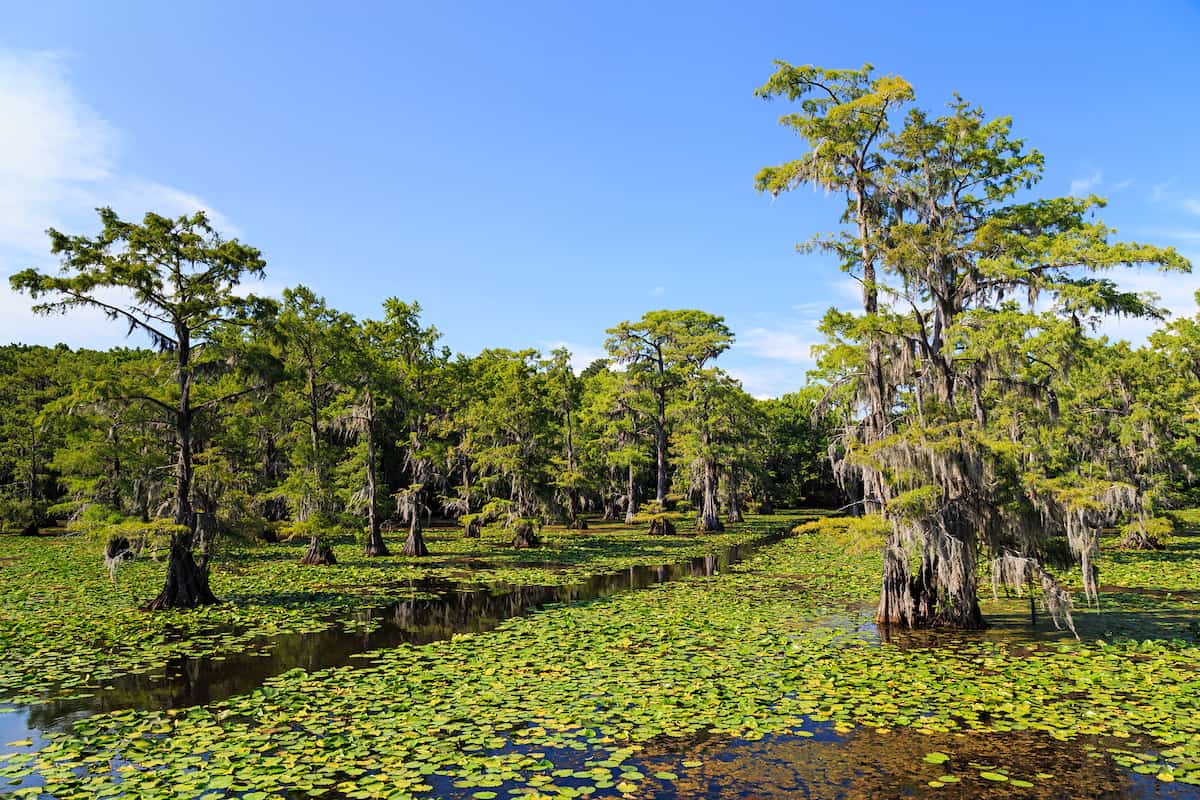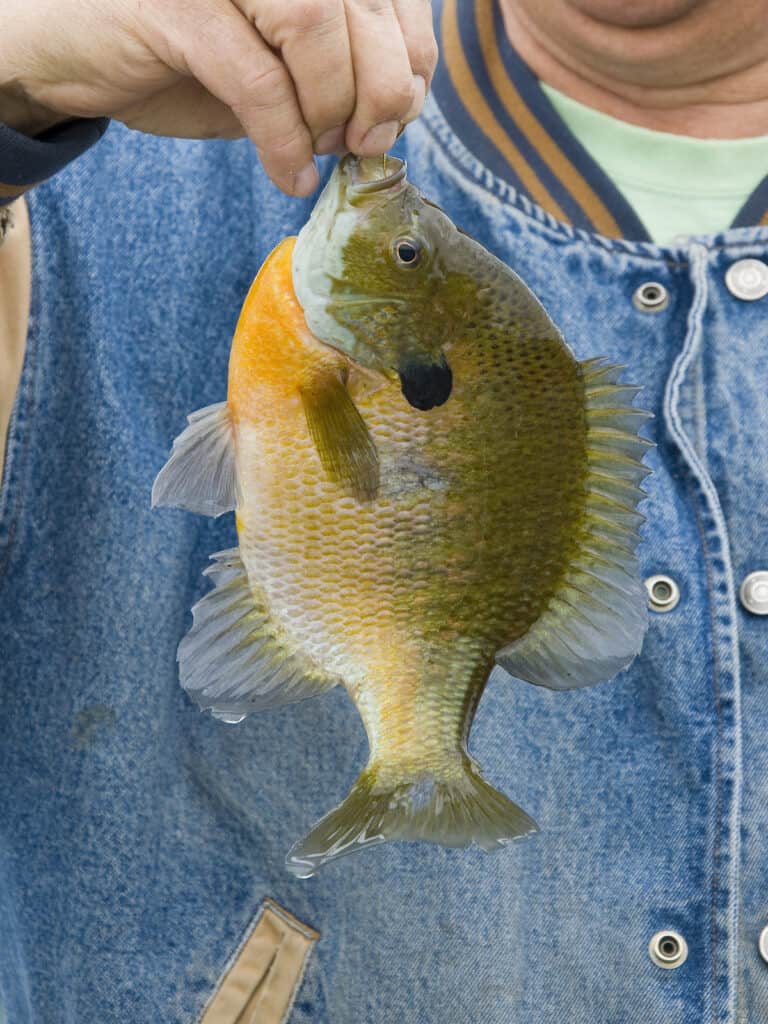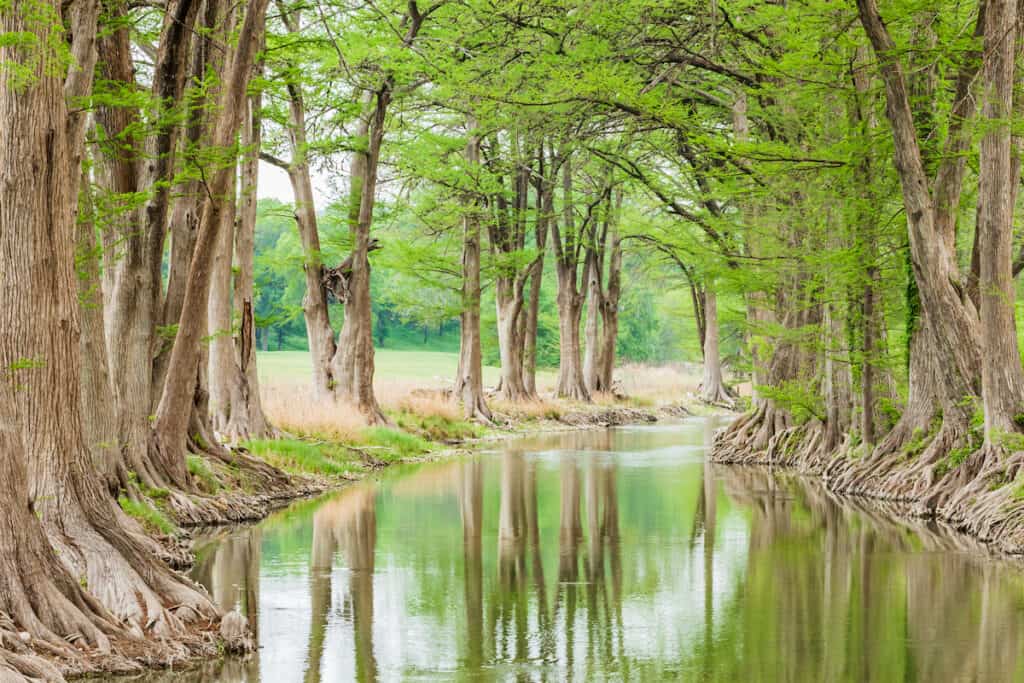Fishing for sunfish has always been a great way to introduce kids to fishing. But do we ever really outgrow fishing for these feisty panfish?
Texas is home to several species of sunfish, with bluegill, redear sunfish and redbreast sunfish being the ones of greatest interest to anglers. Many folks just call whichever ones they catch bream or sun perch or even simply perch, and toss them in the bucket.
Of course, that’s not counting largemouth bass and crappie, which are—technically—members of the sunfish family. You’ll definitely find the best spots to catch those elsewhere on our website.
Bluegill and their kin seldom exceed 9 or 10 inches in length, and any specimen that tops a pound can legitimately be called a trophy. But angling for these fish has never been about size.
Fishing for bluegill and sunfish is simply fun. These fish bite readily and put up a determined fight on light tackle.
Oh, and they’re tasty, too. A bucket of chunky bluegill, filletted and dredged in cornmeal, makes about as good a fish fry as you’re ever likely to enjoy.
How to Catch Sunfish
Bluegill fishing in these Texas lakes can be as simple as dangling a worm on an aberdeen hook below a cork. Bluegill are often found close enough to shore that a boat is unnecessary.
That being said, the biggest sunnies tend to reside a little deeper than the little guys. The exception is the spawning period in late spring and early summer, when the males dig oval-shaped ‘nests’ on sand and gravel flats, sometimes in less than 2 feet of water.
As simple as catching sunfish can be, there are also anglers who get very much into pursuing larger sunfish and bluegills using jigs and other artificial baits.
Fly fishing for sunfish is also a sport unto itself, especially on the clear Hill Country rivers and streams of Central Texas.
For more about how to catch these fun panfish, read our straight-forward guide, Fishing for Bluegill and Sunfish: Simple How-To Techniques and Tips.
Best Bluegill & Sunfish Fishing
Redbreast sunfish are most common in the central part of the state, while redear sunfish (also known as shellcracker) are more common in East Texas lakes and reservoirs. There is a fair bit of overlap, as you’ll see in some of our top waters.
Bluegill, which are abundant in many spots across America, also are fairly common throughout practically all of Texas’ best lakes and rivers.
Toledo Bend Reservoir
One general rule can be applied to finding the biggest bluegill in Texas: they tend to come from waters that are also great bass lakes. Toledo Bend Reservoir is a good example that confirms this rule.
This 181,000-acre reservoir along the Louisiana border is the biggest lake in Texas, and arguably the best place to catch giant ‘gills. As soon as the largemouth bass spawn starts to wind down, the bluegill spawn kicks into high gear.
That usually happens in May, though you might find some bluegills on beds as late as July. You can actually smell it in the air when lots of spawning bluegills are nearby. Some anglers describe it as a watermelon rind-like odor.
The best spots are sheltered mud-bottomed flats in 4 to 8 feet of water. Look for areas adjacent to sand and gravel banks, or near the edges of grass and reed beds.
Worms are always effective, though some local bluegill enthusiasts favor crickets when the fish are in shallow water.
There are great bluegill spots in every corner of this massive lake. Try Sixmile Creek toward the lower end of Toledo Bend, Patroon Bayou in the mid-lake area, or Caney Branch farther up at the upper end.
Toledo Bend Reservoir also has a solid population of redear sunfish. They tend to favor gravel areas and slightly deeper water than bluegill, and are more bottom-oriented. Try live worms on a Carolina rig to catch the shellcrackers.
Besides being a great bream and bass lake, Toledo Bend also rates among the best in Texas for catfish and crappie fishing.
More: Complete Gude to Fishing at Toledo Bend Reservoir
Lake Conroe
Located just north of Houston, Lake Conroe is a 20,000-acre reservoir on the West Fork of San Jacinto River. It’s one of the most consistent lakes in Texas for bluegill and redear sunfish in the 8- to 10-inch range.
The spawn typically gets going in May and extends through June on Lake Conroe, and the water is usually clear enough that you can spot nesting bluegills using polarized sunglasses. Look for flats dotted with dinner plate-sized craters.
The biggest bluegills tend to bed down a bit deeper than the little guys here. There’s some great water inside the breakwall off Walden Point.
Fish with red worms or bits of nightcrawler close to the bottom in 5 to 10 feet of water.
Texas Parks & Wildlife has sunk numerous fish habitat structures in Lake Conroe, and they attract a lot of bluegills pre- and post-spawn. The Little Lake Creek Arm has several great structures (there’s a map of their location here).
For bank fishing, some of the best access is at the upper end of Lake Conroe. This end of the lake is located within Sam Houston National Forest, which provides bank and boat access at Cagle Recreation Area and Stubblefield Recreation Area.
Conroe Lake also is easily among the best bass fishing lakes in the greater Houston area (and all of Texas) and is a very good catfishing lake in the region.
More: Complete Guide to Fishing at Lake Conroe
Guadalupe River
Fly fishing for redear and redbreast sunfish is a beloved sport among a core group of dedicated anglers who live near the Guadalupe River. These fish inhibit the river’s deep, clear pools in great numbers.
Some real giants have been caught here too, at least by sunfish standards. Redbreast sunfish weighing over a pound are possible, and the river record redear is over 2 pounds. Smaller species like green sunfish and longear sunfish are also present.
Flies including nymphs, small streamers and terrestrials are all effective. Live bait on an ultralight spinning rod will do the trick too if fly fishing isn’t your thing.
Be prepared to do some hiking and wading to get to the best water.
Guadalupe River State Park, located just about 20 river miles upstream from Canyon Lake, is the most popular access point on the river. There’s some great fishing water here, though it can get quite crowded with swimmers and float tubers, especially on summer weekends.
If you’re looking for quiet fly-fishing water to target big sunfish, the best way to find it is to scan a map and look for areas where a bridge crossing provides an unofficial access point.
There are a lot of good spots in and around the communities of Ingram, Kerrville and Center Point.
You might know the Guadalupe River better as the best trout fishing stream in Texas, although that designation mostly applies to the tailwater section below Canyon Lake Dam.
Besides sunfish and trout, the Guadalupe River is also our top pick for catching native Guadalupe bass, the Texas state fish. Also in this area, Canyon Lake is an excellent smallmouth bass fishery.
More: Complete Guide to Fishing the Guadalupe River
Lady Bird Lake
A long, narrow reservoir on the Colorado River, Lady Bird Lake is located in the heart of Austin, and offers some fantastic urban fishing opportunities.
The reservoir harbors abundant populations of bluegill, redear sunfish and redbreast sunfish.
You can definitely expect to catch some big ones. The state record redear sunfish, weighing 2.99 pounds and measuring 14 inches, weas caught here in 1999. It’s hard to even wrap one’s mind around a sunfish that size.
Small jigs, soft plastics and tiny ultralight crankbaits are great for selecting the biggest sunfish in Lady Bird Lake.
Target shoreline cover like cypress roots, fallen trees and logs. There are also some productive weed beds, particularly in the upper end of the lake.
This is a great lake to explore by kayak, and there are numerous access points, some more “official” than others.
The launch ramp behind Stephen F. Austin High School is a great option, and from here you can paddle upstream to Red Bud Isle, covering some of the best water on the lake.
Much of the shoreline of Lady Bird Lake is also made up of public parkland, and the entire lower third of the shoreline is paralleled by a public hiking trail you can use to find bank access.
The only problem with Lady Bird Lake is that it can get very crowded.
Lake Austin—another Colorado River reservoir located just upstream from Lady Bird Lake—also offers some great sunfish angling opportunities, and may be slightly less busy. (It’s also a lake definitely worth fishing for bass in the Austin area.)
Caddo Lake
One of the few natural lakes in Texas, Caddo Lake is located on Big Cypress Bayou, where it extends across the state line from Northeast Texas into Louisiana. It’s a wild place, and there are a lot of massive sunfish here.
Bluegill are the most common species, but Caddo Lake also produces huge shellcrackers, many of them weighing a pound or more. The best fishing is from late spring into early summer.
The standard bait here is a 1- to 2-inch segment of nightcrawler on an aberdeen hook.
Bobbers are helpful in this snaggy water, but try to keep your bait close to the bottom, especially if you’re targeting redears. Cypress trees and other woody cover are often the most productive.
Something to be aware of is that much of Caddo Lake is a labyrinth of backwaters, sloughs and cypress groves. It is very easy to become lost here, so a quality map of the lake is essential if you plan to venture beyond the marked boat lanes.
That being said, there’s some outstanding fishing for bluegill, sunfish, bass and crappie in backwater areas. (Caddo Lake also made our comprehensive list of best bass fishing spots in all of Texas.)
It’s an excellent kayak fishing lake, and Caddo Lake State Park provides a perfect launch point.
Final note: Watch out for gators!
San Marcos River
Another great fly fishing river in Central Texas, the San Marcos River is a spring-fed stream that arises from the San Marcos Springs, in the city of San Marcos.
The springs keep the river’s flow fairly consistent year-round, and also help to regulate its temperature.
Redear and redbreast sunfish are abundant in the river, along with bluegill and several species of bass, including largemouth, smallmouth and guadalupe bass.
Longear sunfish, although typically smaller, are also common. A 0.84-pound state record longear was caught here in 2009.
This is a great river for float trips, and local guides often float the river using rafts, stopping to fish at productive spots. The San Marcos has a lot of deep pools and heavy cover that harbor schools of 8- to 10-inch sunfish.
Larger sunfish are often more than willing to snatch small lures, especially 1/16 and 1/8-ounce soft plastic jigs. Flies including small streamers and topwater poppers are also effective.
Focus on weed edges and woody cover in deep holes, and expect a mixed bag of large sunfish and small bass.
The upper portions of the San Marcos River flow crystal clear, and the water takes on an emerald green tint farther downstream.
Texas Parks & Wildlife operates several public access sites on the river.
Calaveras Lake
Calaveras Lake encompasses a little over 3,600 acres just a few miles outside of San Antonio. It’s a great fishing lake for a variety of species, bluegill included.
You can catch a lot of bluegills in the 9-inch class here, some of which weigh nearly a pound. Redear sunfish don’t get quite as big in Calaveras Lake, but there are a lot of them around too.
It’s also a fairly straightforward lake to fish, with plenty of easy access.
Part of what makes this such an excellent fishing lake is its abundance of cover. When it comes to places to fish, anglers are positively spoiled for choice.
Rip-rap along the dam and in various areas near the Calaveras Power Station is usually productive, and the lake has a lot of shallow cattails and bulrushes.
Calaveras Lake also has a couple of bridge crossings, around which bluegills congregate at various depths year-round. Expect to nab a few channel catfish around the bridge too if you’re fishing with worms close to the bottom.
The best starting point on the lake is Calaveras Lake Park, which provides boat launch facilities, docks and piers, ample bank fishing access and a campground on the eastern shore of the lake.
The best bluegill fishing is typically from April through June.
Calaveras Lake also made our list of best bass fishing spots near San Antonio.
Wheeler Branch Reservoir
A tiny man-made lake that spans just 180 acres, Wheeler Branch Reservoir is easy to overlook. But this diminutive lake about an hour southwest of Fort Worth has been cranking out some huge bluegill and sunfish in recent years.
Wheeler Branch Reservoir is very deep for its size, and its waters are exceptionally clear. Schools of hefty bluegills inhabit brush piles, weed beds and flooded timber year-round.
The lake also has healthy growth of aquatic vegetation, and weed edges ranging from 5 to 15 feet deep are reliably great spots to catch big ‘gills.
Lots of them weigh close to a pound, and a new state record redbreast sunfish weighing 1.75 pounds was caught here in 2020.
Gas-powered boat motors are prohibited on Wheeler Branch Reservoir (electric trolling motors are allowed) which makes this a great place to fish from a canoe or kayak.
Somervell County Water District operates Wheeler Branch Park on the shoreline, and it’s the only public access on the lake. Bank fishing access, a fishing pier and hand launch for small craft are available in the park.



